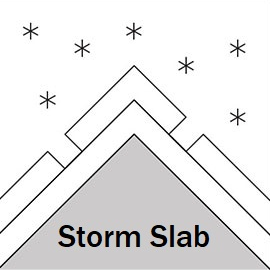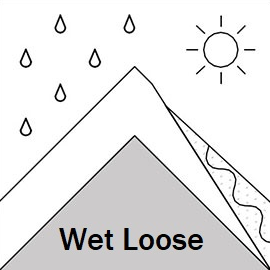Gudauri
Natural avalanches are unlikely, human-triggered avalanches are possible. Small avalanches in specific areas, or large avalanches in isolated areas.
Further light snow, with rain in the sub-alpine continues the possibility of small wet snow avalanches.
Forecast issued at: 17 February 2024 10:00
Forecast valid until: 19 February 2024 10:00
Forecaster: Manu Greer
High Alpine
> 2600m
2 Moderate
Heightened avalanche conditions on specific terrain features. Evaluate snow and terrain carefully; identify features of concern.
Alpine
2000m - 2600m
2 Moderate
Heightened avalanche conditions on specific terrain features. Evaluate snow and terrain carefully; identify features of concern.
Sub Alpine
< 2000m
2 Moderate
Heightened avalanche conditions on specific terrain features. Evaluate snow and terrain carefully; identify features of concern.
Avalanche Problems
Storm Slab

Small amounts of new snow could form small slab avalanches, especially if the snow totals or winds are higher than expected.
| Sensitivity | The specific avalanche problem type is difficult to trigger with a human rider. |
| Distribution | A few, isolated locations; evidence for instabilities is rare and hard to find. |
| Time of Day | All day |
| Trend | Deteriorating |
| Confidence | Moderate |
Loose Wet

Below 2000m on all aspects, and up to 2600m on sunny aspects, warm temperatures, sun or light rain could be enough to loosen the surface snow and cause small avalanches.
| Sensitivity | The specific avalanche problem type is reactive to human rider triggers. Easy to trigger with ski cut. |
| Distribution | Specific areas, with common characteristics. Evidence for instabilities exists, but it is not obvious and finding it requires careful observations. |
| Time of Day | All day |
| Trend | Deteriorating |
| Confidence | Moderate |
Persistent Slab

Weak, facetted snow layers have been observed in the region at all elevation bands, around buried crusts and in areas with shallow snow depth. Where these weak layers have enough dense snow above them, medium to large avalanches could be started. The problem is worse in the north of the region where the snow is shallower. With recent warm temperatures these layers should have stabilised at lower elevations, but remain cautious on steep terrain.
| Sensitivity | The specific avalanche problem type is difficult to trigger with a human rider. |
| Distribution | Specific areas, with common characteristics. Evidence for instabilities exists, but it is not obvious and finding it requires careful observations. |
| Time of Day | All day |
| Trend | Improving |
| Confidence | Moderate |
Recent Avalanches and Snowpack
Recent avalanche activity:
Several small (size 1) loose wet avalanches observed during the last few days' warm weather, S half, below 2200m.
Glide slabs continue to be active on multiple aspects (more commonly E, S and W) below about 2600m, some up to size 2.
Snowpack: Warm temperatures have brought light rain at low elevations and about 15cm of new snow at higher elevations in the last 2 days. Crusts with weak snow layers around them are now less of a problem on lower elevation and sunny slopes. In northern areas (North of Kobi Valley), the snowpack is thinner and weaknesses around crusts and at the ground were seen. Watch out for weak, sugary (faceted) snow in areas where the snow is shallow. Warm temperatures are gradually strengthening the snowpack. Check out recent snow profiles (or add your own!) at snowpilot.org
Weather
The last few days have been very warm with light winds, small amounts of new snow higher up, and rain lower down. Sunny periods, light snow showers and light N winds expected for the next 2 days, freezing level 1800-1900m.
Disclaimer
Our avalanche forecasters are internationally qualified and experienced professionals, and data is provided by skilled observers. We encourage you to make your own observations and decisions, without relying solely on our forecast, since any forecast is a generalised 'best guess', and in certain cases it might be inaccurate. We can not be held liable for any actions you take in the backcountry that may result in injury, loss or death.